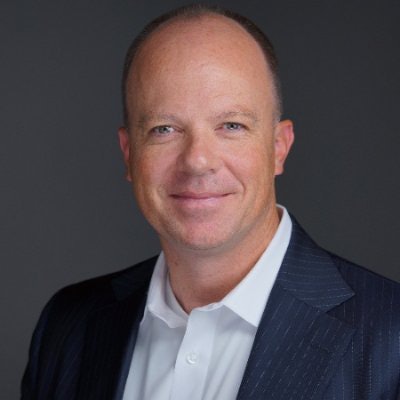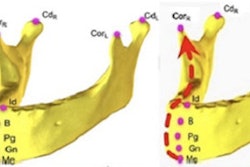
According to statistics, production is down, collections are stagnant, and operational costs are through the roof, causing many dentists to panic. Most of us have had to raise our fees, and insurance reimbursements are not keeping up with rising costs. But the big data are missing a key point: Not every practice is the same.
 Dr. James V. Anderson
Dr. James V. AndersonIn reality, no two practices are alike. The statistics quoted by experts don't reveal the full picture. Yes, there are challenges to overcome, but as a profession, we are here to serve the best way we can.
Now is not the time to cry, "Woe is me," and shake your hands in exasperation. As you navigate your practice through a bumpy economy and high inflation, it's natural to be cautious, especially when it comes to spending a lot of capital on equipment for your practice.
4 technologies that are a bright spot in a gloomy market
Despite the gloomy environment, there are ways we can use technology to our advantage. We are in an exciting time for dentistry, and the technology that is here can help us succeed.
1. Intraoral cameras
Intraoral cameras have been around for a long time and have improved from early iterations. Is your camera sitting in a corner collecting dust? Now is the time to bring it out and use it on every hygiene patient.
Many dentists don't connect revenue generation with an intraoral camera, but it is a proven system for documenting and clarifying evidence supporting treatment. The dentist can track the success of any treatments, such as fillings, veneers, and crowns, more quickly, thus enhancing the patient experience.
Even better, dental claims are seldom denied for lack of supporting evidence when intraoral photos are included in the submitted claim. Submitting radiographs that don't visually prove the medical necessity for treatment often ends in claim denial.
Procedures paid with the inclusion of intraoral photos include but are not limited to veneers, crowns, cracks in teeth undermining cusps, multiple surface composites, crazed and cracked teeth, washed-out or existing fractured restorations, gingivectomies, biopsies, frenectomies, periodontal pocketing, bleeding and tissue conditions, implant placement, and more.
Intraoral cameras are easy for the dental team to handle since they are small and light. Dentists and hygienists no longer need to ask patients to open their mouths wider or use mouth mirrors.
Patients will appreciate the technology, too, because it's less invasive and they won't experience discomfort. Excellent for preventive care, an intraoral camera can document the development of a dental problem and provide a visual for the patient that is undeniable proof of need.
2. Virtual reality
Virtual reality (VR) is a simulation wherein the participant can experience a different perspective. Although its roots are in the gaming world, VR has many applications in medicine and dentistry.
VR can change how dentists communicate with patients. Dentists can lose patients in long-winded explanations about what they can expect with implants, veneers, and other multiple-step procedures, but patients can instantly gain understanding with VR. Dentists can render a model of a patient's entire mouth, or even their whole head, using this technology without having the patient in the chair.
Dentists can interact with the 3D model to conduct mock treatments while also educating and providing patients with a visualization of teeth structures and underlying foundations. VR brings a new dimension to the patient experience and can lessen dental pain and anxiety.
3. Teledentistry
Teledentistry gained acceptance during the pandemic and is here to stay. It has served as an excellent way for dentists to connect with their patients, provide advice, and promote further care. Due to lockdowns, many dentists adopted teledentistry to stay connected to patients and keep their practice viable.
Besides connecting with patients, using teledentistry has allowed dentists to determine whether a patient has a minor issue or if an office visit is required. While teledentistry has its limitations, it has helped dentists worldwide earn some living during the pandemic, and it has improved dental accessibility for many demographics, such as rural or underserved areas.
4. InsurTech for insurance and claims
Insurtech, a merging of the words "insurance" and "technology," refers to using technological innovations to find cost savings and efficiencies from the present insurance industry model.
Newer technologies in the industry are improving how patients are covered and how claims are paid. The medical and dental insurance market is being transformed by the adoption of insurtech tools to make the system more efficient. Hopefully, this technology will help dentists better manage insurance accounts receivables.
In the traditional insurance model, some people pay more than they should based on data used to group people. Insurtech aims to refine this data and analysis using artificial intelligence or inputs from tools like fitness trackers to build more finely delineated groupings of risk so that products are priced more competitively.
The traditional claims management process entails manually reviewing each claim, deciding what compensation to award, then remitting that compensation. Dentists often wait anywhere from 35 to 60 days to get paid.
With insurtech, insurance companies are building processes that automate specific processes and detect fraud. Large insurers can use automation or repetitive workflows to pay out many claims with minimal human intervention, which should allow claims to be paid quicker with fewer delays.
Dr. James V. Anderson is a practicing dentist in Syracuse, UT, and is the CEO and founder of eAssist Dental Solutions. He can be reached via email.
The comments and observations expressed herein do not necessarily reflect the opinions of DrBicuspid.com, nor should they be construed as an endorsement or admonishment of any particular idea, vendor, or organization.



















